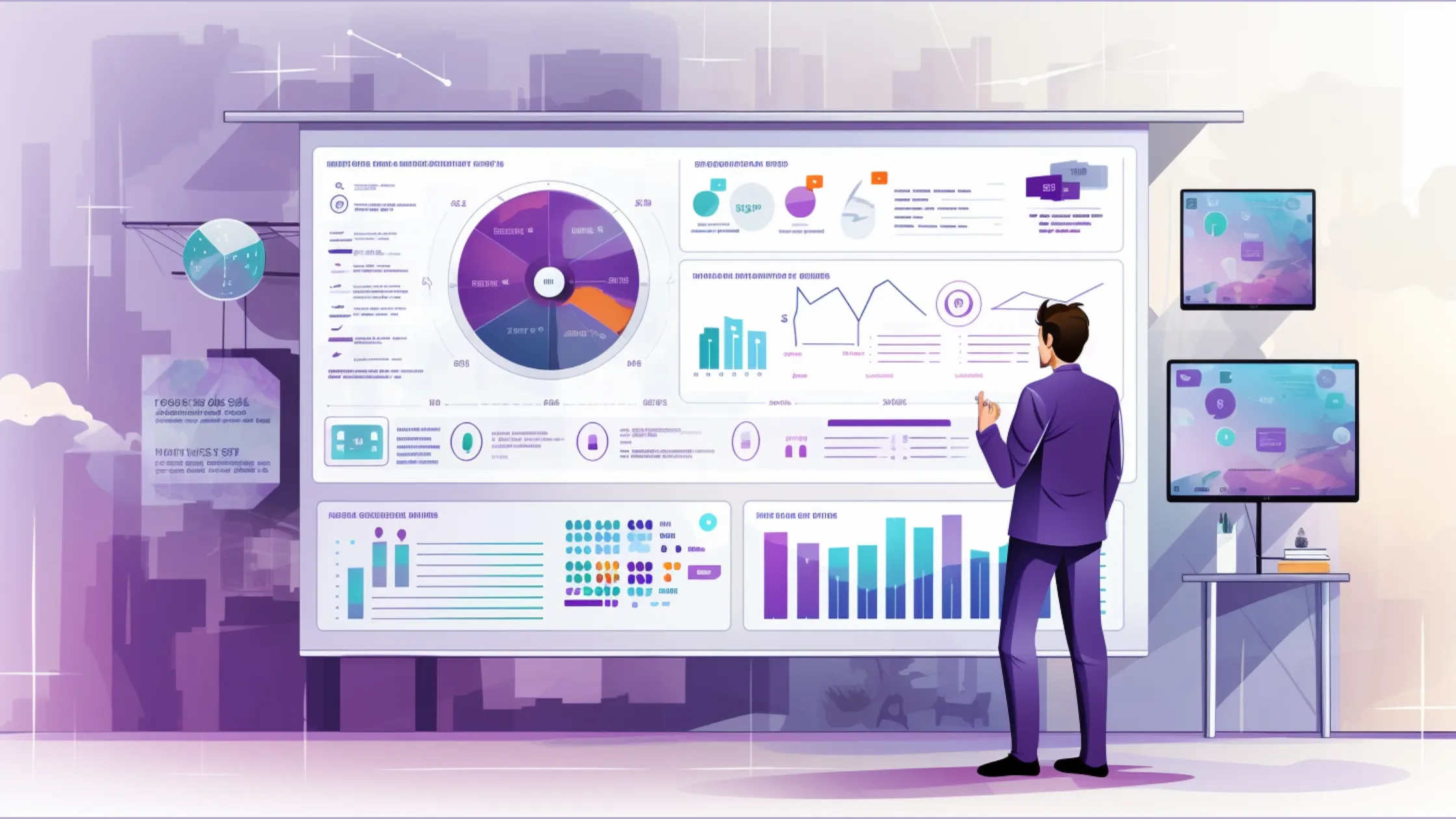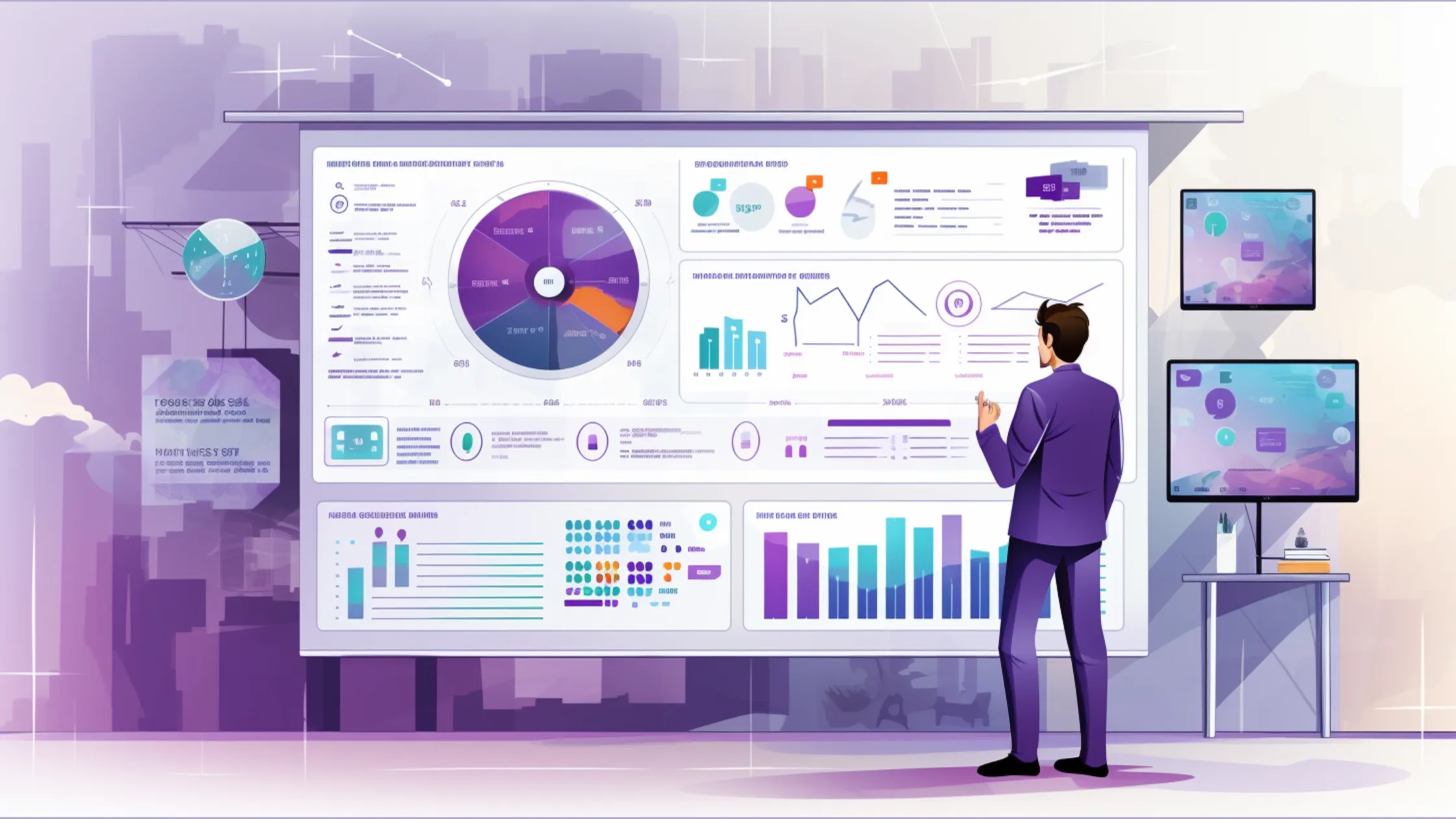Optimizing costs has become a top priority for industry leaders in today’s challenging retail landscape. One area that holds immense potential for cost savings is energy management. An industrial refrigerator alone can take up almost 85% of the total energy consumption, and becomes an electricity guzzling asset. By implementing effective energy optimization strategies, retailers can reduce operating expenses, contribute to sustainability goals, and improve their bottom line.
What is Energy Optimization and Why is it Important?
Energy optimization is the process of maximizing energy efficiency while minimizing energy waste in commercial buildings. It involves identifying and implementing strategies to reduce energy consumption, improve equipment performance, and optimize energy systems.
It is crucial for retailers as energy is one of the most extensive operating costs in the industry, with significant potential for savings. By focusing on energy optimization, retailers can lower their energy bills and enhance their environmental sustainability.
In today’s world, where customers and investors are increasingly conscious of brands’ environmental impact, energy optimization can help build credibility and attract eco-conscious consumers. Optimizing energy consumption aligns with global efforts to combat climate change and achieve net-zero emissions.
The Benefits of Energy Optimization
Implementing energy optimization strategies can yield numerous benefits for retail portfolios. Here are some key advantages:
Cost Savings: Retailers face substantial energy expenses, making energy optimization a critical factor in achieving cost savings. Given the escalating energy costs in certain regions, it has become imperative for retailers to prioritize optimization strategies across their stores. By minimizing energy waste and enhancing efficiency, retailers can reduce their utility bills effectively, leading to enhanced financial performance and profitability.
Environmental Sustainability: Energy optimization is vital for reducing a retailer’s carbon footprint and promoting environmental sustainability. By upgrading to energy-efficient refrigeration systems, implementing smart controls and monitoring, and adopting sustainable refrigerants, retailers can minimize energy waste and contribute to combating climate change. These efforts lead to cost savings and align with global environmental goals.
Enhanced Brand Reputation: In a world where consumers are more environmentally aware, retailers can demonstrate their dedication to sustainability by emphasizing energy optimization. This commitment attracts eco-conscious customers and cultivates a favorable brand image known for its environmental responsibility. By prioritizing energy efficiency, retailers can align their business practices with the values of their target market and foster long-term customer loyalty.
Improved Operational Efficiency: Operational efficiency and energy optimization are interconnected for retailers. Retailers can achieve enhanced operational performance by optimizing energy systems and equipment, resulting in improved productivity and streamlined processes. By focusing on energy efficiency, retailers can maximize their resources, reduce waste, and create a more sustainable and efficient business model.
Regulatory Compliance: Retailers can safeguard themselves from penalties and legal complications by embracing energy optimization strategies and aligning with their respective countries’ or regions’ energy efficiency regulations and standards. By proactively adopting these strategies, retailers ensure compliance and demonstrate their commitment to environmental responsibility and contribute to the larger goal of sustainable development.
Key Components of an Energy Optimization Roadmap
To achieve successful energy optimization, retailers need a well-defined roadmap. Here are the key components to consider in developing an energy optimization roadmap:
Energy Efficiency Audit: The first step in the energy optimization process is to conduct a comprehensive energy efficiency audit. This involves assessing the current energy consumption patterns, identifying inefficiencies, and understanding the potential for improvement. The audit should cover all stores, sections, and systems for a holistic view of energy usage.
Technology Upgrades: Based on the audit findings, retailers can identify outdated and energy-intensive equipment and systems. Consider upgrading to energy-efficient technologies such as LED lighting, intelligent HVAC systems, and modern appliances. While these upgrades may require initial capital investments, they can result in long-term cost savings and energy efficiency improvements.
Real-Time Energy Monitoring: Implementing energy monitoring software and IoT devices allows retailers to collect accurate utility and performance data in real-time. This data helps identify energy usage patterns, track seasonal trends, and pinpoint areas for optimization.
Automation and Optimization: To sustain energy efficiency, automation is crucial. Cloud-based energy management systems can automate optimization measures and remotely monitor performance across thousands of sites. This includes intelligent control of lighting based on occupancy, adjusting HVAC settings based on weather conditions, and proactive fault detection and diagnosis.
Continuous Improvement: Energy optimization is an ongoing process. Retailers should establish a culture of continuous improvement by regularly reviewing energy consumption data, identifying new opportunities for optimization, and implementing innovative solutions.
Employee Engagement and Training: Engaging employees and providing training on energy-saving practices can significantly contribute to energy optimization efforts. Employees should be educated about energy efficiency best practices, encouraged to report energy waste, and involved in implementing energy-saving initiatives.
Performance Measurement and Reporting: Establishing key performance indicators (KPIs) and regularly monitoring energy consumption metrics allows retailers to track progress and evaluate the success of energy optimization initiatives. Transparent reporting on energy savings and sustainability achievements can enhance brand reputation and attract eco-conscious consumers.
By incorporating these key components into an energy optimization roadmap, retailers can create a structured and systematic approach to achieve significant cost savings and environmental sustainability.

7 Ways to Optimize Building Energy Consumption
Implementing energy optimization strategies requires a multi-faceted approach. Here are seven ways retailers can optimize building energy consumption:
1. Real-Time Energy Monitoring:
Implement a comprehensive energy monitoring system to track and analyze energy usage data in real-time continuously. This data can help identify consumption patterns, detect anomalies, and pinpoint areas of inefficiency, enabling informed decision-making for optimization.
2. Automated Fault Detection and Diagnostics:
Utilize advanced fault detection and diagnostics tools to detect energy-related faults or malfunctions in building systems automatically. Automatically assign repair work to technicians and prioritize faults by severity for prompt resolutions. This proactive approach enables prompt identification and resolution of issues, ensuring optimal performance and minimizing energy wastage.
3. Demand Response Management:
Implement demand response strategies to manage and adjust energy consumption during peak demand actively. By participating in demand response programs, building owners can contribute to grid stability, reduce strain on the energy infrastructure, and potentially benefit from cost savings.
4. Predictive Maintenance:
Adopt a predictive maintenance approach by leveraging data analytics and predictive algorithms to identify potential equipment failures or inefficiencies before they occur. Couple this with an automated work order management workflow to reduce response time and boost productivity. By addressing maintenance needs proactively, building owners can maximize energy system efficiency and prevent unexpected breakdowns.
5. Energy Benchmarking:
Compare and benchmark energy consumption data across similar buildings to gain insights into relative performance and identify areas for improvement. Benchmarking allows building owners to set realistic goals, track progress, and implement energy-saving strategies based on successful practices in similar settings.
6. Tenant Engagement:
Actively engage building occupants with energy consumption information, tips, and feedback mechanisms. By raising awareness and encouraging sustainable behaviors, such as turning off lights and adjusting thermostat settings, tenants can actively contribute to energy conservation efforts and foster a culture of responsibility.
7. Sustainability Reporting:
Generate comprehensive sustainability reports highlighting energy efficiency achievements, savings, and environmental impact reduction. Transparent reporting demonstrates a commitment to sustainability, enhances stakeholder trust, and can attract eco-conscious tenants or investors.
Implementing these strategies can help optimize building energy consumption, reduce costs, and contribute to a more sustainable future, regardless of the specific facilities management platform used.
Examples of Successful Energy Optimization Projects
Several retailers have already embarked on successful energy optimization projects, reaping the benefits of cost savings and improved sustainability. Here are a few examples:
Walmart, one of the world’s largest retailers, has taken significant strides in energy optimization across its vast network of stores, distribution centers, and offices. Through a comprehensive energy optimization program, Walmart has prioritized investments in energy-efficient technologies and practices. By implementing measures such as LED lighting, high-efficiency HVAC systems, and advanced building control systems, they have successfully reduced energy consumption and associated costs. Furthermore, Walmart has actively pursued the integration of renewable energy sources, including solar and wind power, which has not only resulted in substantial cost savings but also contributed to a significant reduction in greenhouse gas emissions.
Whole Foods Market, a prominent grocery retailer, has made energy optimization a key focus within its operations. By prioritizing energy-efficient refrigeration systems, Whole Foods Market has not only improved the freshness and quality of its products but also reduced energy consumption. The implementation of LED lighting throughout their stores has further contributed to energy savings while creating a pleasant shopping environment. Additionally, the utilization of advanced building controls enables precise monitoring and management of energy usage, resulting in enhanced operational efficiency.
A large format retail chain in the UK, adopted a cloud-based retail operations platform, Facilio. to reduce their energy consumption and deploy custom store management solutions. They were able to consolidate data from all their stores in one place, and provide individual store managers and operators with granular visibility into their store operations. With set point controls, they were able to optimize assets and recommend repairs to conserve energy. With Facilio’s energy management suite, they were able to realize savings of $5 million, and have 12% greater energy efficiency.
These examples highlight the immense potential for cost savings and sustainability improvements through energy optimization initiatives.
How Energy Optimization Can Help Improve Your Portfolio’s Bottom Line
In today’s retail industry, optimizing costs and improving sustainability are critical for success. Energy optimization offers a powerful solution to achieve both objectives. By implementing energy-efficient technologies, automating energy management, and adopting a systematic approach to optimization, retailers can unlock significant cost savings, enhance brand reputation, and contribute to environmental sustainability.
To embark on an energy optimization journey, retailers should conduct comprehensive energy efficiency audits, upgrade to energy-efficient technologies, implement real-time energy monitoring systems, automate optimization measures, and focus on continuous improvement. By incorporating employee engagement, performance measurement, and reporting, retailers can ensure the success of their energy optimization initiatives.
In this digital age, leveraging technology solutions such as Facilio’s energy management platform can simplify and streamline the energy optimization process. Facilio’s cloud-based software enables remote monitoring, real-time data analysis, and intelligent automation, making energy optimization more accessible and effective for retailers with large portfolios.
By prioritizing energy optimization, retailers can not only improve their bottom line but also contribute to a more sustainable future. Embracing energy optimization is not just a wise business decision; it is a commitment to a greener, more efficient retail industry.



